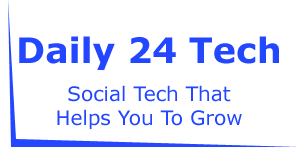Answer | Setting and achieving goals is quite imperative in today’s very fast world, both personally and professionally. The correct goal-setting tools make all the difference in that journey to success.
This is a detailed guide to the most effective goal-setting tools so that you make the best choices while enlightened on the psychology behind it all and how to be successful in the long run.
Understanding the Need for Setting Goals
Before getting into specific tools, understand why goal-setting is so crucial. The purpose of goal-setting is to provide direction and focus by acting as a guide in your personal and professional life. Goal-setting drives motivation and commitment since it gives you a clear target to work toward.
More than that, well-defined goals act as a yardstick for measuring progress and let one monitor their progress, managing and modifying as they go along.
The psychological benefits of setting goals are no less important. Achieving any goals, even very small ones, increases self-confidence and satisfaction, thus creating a positive feedback loop that prompts further growth and achievement.
Setting and achieving such goals builds resilience, fosters better problem-solving ability, and augments well-being.
How to Set Goals Effectively: The Science
Research into the nature of the human brain, in terms of psychology and neuroscience, has fairly uncovered the mystery of why goal-setting is so potent.
If we set goals, the brain discharges dopamine, a neurotransmitter responsible for motivation and pleasure. In other words, setting a goal results in a chemical reward that reinforces the behavior aimed at attaining it.
Furthermore, writing these goals down did much to increase the chances of actually attaining them. Research by Dr. Gail Matthews at Dominican University indicated that those people who write down their goals were 42 percent more likely to attain them than others who did not.
These results underline the value of using tools in which the user can write down clear articulation and documentation of their goals.
Key Features of Effective Goal-Setting Tools
While considering or evaluating goal-setting tools, several important features are always to be factored in.
First and foremost, the tool needs to have an easy-to-use interface since it will make sure that you do not frustrate yourself or get overwhelmed when trying to navigate through the tool and learn through its operations.
It would also provide room for customization in setting goals to best suit your needs and preferences.
The other important feature is progress tracking, which means that it is visual; hence, it keeps track of your steps toward the goals.
Not only instrumental in keeping you motivated, but it will also help in making data-driven decisions around your strategies. Reminders and notifications therefore keep one responsible in keeping with the objectives.
It will also integrate with other apps and platforms that help in customizing workflow and make sure your goal-setting tool blends into your already-built digital infrastructure.
Today’s society is on the go, thus mobile accessibility is crucial for logging in and making changes to your goals from any device.
To top it off, collaboration features can be helpful when working towards common objectives or wanting others to help keep you accountable.
Best Goal-Setting Tools for Personal and Professional Growth
- Trello
Trello acts as a catch-all for project management that really can be flexed to goal-setting very effectively. Its visual board layout always attracts people who like things in a more graphical way concerning goals and tasks.
One of the strengths of Trello is its ease and flexibility in making boards for different goal categories and moving tasks through various stages of completion.
While Trello is undeniably great for team collaboration, the app is fantastic for setting personal goals. Not to mention you have additional power-ups that will help extend its features and deliver it as a very powerful goal-tracking system. But then again, some of these advanced features need a subscription plan.
- Asana
Asana is a fairly robust project management platform that can be used for overall goal setting and tracking. It offers multiple views—list, board, and timeline—which help serve divergent planning styles.
Asana works well when handling goals with complex, multi-step objectives, thus being quite serviceable for professional development or even team-based goals.
The strong integration features of the platform allow a user to be connected to many other tools, making for a perfectly seamless workflow. On the negative side, the comprehensive feature set of Asana might overwhelm those seeking a much simpler solution for personal goals. Notably, it has a free version, but some advanced features are available only in the paid plans.
- Todoist
Of the most popular to-do list apps out there, Todoist is very fine-grained for setting and tracking daily goals.
A clean, minimalistic interface lends itself to easy use for quick entries and task management. Todoist shines in habit building and daily goal setting; therefore, it is very suitable for those who are into consistent incremental progress.
One of the outstanding features of Todoist is the natural language input, which enables users to add tasks very fast and set due dates in everyday words.
This tool lacks several advanced features that other tools offer in planning long-term goals, but its simplicity and focus on daily productivity make it valuable to many users.
- Strides
Strides is a goal-tracking app specifically developed for personal development. The software provides support for different goal types—habits, targets, and averages—which allows flexibility in how you set or measure objectives.
In this, the user gets the best chart of progress with detailed statistics, from which one sees an overview and trend of achieving goals set.
One of the drawbacks to Strides is that it’s only available on iOS, thus alienating users of other platforms. Another point to consider is that some of the advanced features are accessible only upon purchase of a premium subscription.
Despite all these shortcomings, Strides retains the position of a strong tool for any person seriously concerned with complete personal goal tracking and habit building.
- Notion
Notion is a very versatile, all-in-one workspace that might be tailored for goal setting and tracking. One of the strong points is that it allows users to construct far-from-limited, personalized goal-setting systems.
Notion supports a wide range of content types, from simple text and image media to databases, so it would be possible to create rich, multimedia goal plans.
While one of the greatest strengths of Notion is its ability to customize, this feature can be a drawback for specific users.
Compared with other more focused goal-setting tools, there is a steeper learning curve to this platform that contains options overwhelming to some who need a more structured way of doing things.
However, for users willing to invest time in setting up their ideal system, Notion is second to none in flexibility.
- Coach. me
Coach. I am an atypical goal-setting app in that it pairs personal tracking with professional coaching. One can access professional coaches, inside the application, who specialize in different areas of personal and professional development. This may be most useful for those who respond well to some level of external guidance and accountability.
In addition to coaching services, Coach. I offer habit tracking and serve up motivational content. It also supports a community of users working toward similar goals, providing peer support and motivation. However, be aware that coaching comes at a cost, and core goal-setting features aren’t quite as full-featured as some dedicated goal-tracking tools.
- Evernote
While this is more of a note-taking app, Evernote can be very useful in setting and monitoring goals. A person can leverage its flexible note-taking capability to create elaborate plans for one’s goals, track their progress, and capture all types of information in one place.
Its powerful search functionality will let a person quickly find and review goal-related notes.
Certainly, one of the strengths of Evernote is that it syncs across all platforms, so you can pick up your goals on any device.
The downside is that users must remember that Evernote wasn’t essentially designed with goal setting in mind. Therefore, it may require more manual setup and maintenance than some tools that are strictly goal-tracking oriented.
Moreover, some of the advanced features it offers require a premium subscription.
Functional Goal-Setting Techniques — Developed
Success, no matter what tool is applied, requires that the goal-setting itself be effective. The SMART framework represents Specific, Measurable, Achievable, Relevant, and Time-bound. It is an accepted method of clearly setting forth what your goals are in a very reachable way. Regardless of which tool you are working with, ensure your goals meet the criteria for achievement.
Another major strategy is to break large goals into manageable tasks. Sometimes referred to as “chunking,” this technique makes big and ambitious objectives much less daunting and points out one or more avenues on how to finish them. Most goal-setting tools provide features supporting this strategy by creating subtasks or milestones inside the greater goals.
It’s also very important to prioritize things when setting goals. Not all goals are equal; some may be more impactful than others. Organize and rank your goals with the features of the tool that you will choose so that you are always working on what matters.
Another key practice to apply is the regular reviewing and adjustment of your goals. Over time, new information will come out, making the need for adjustments to the goals quite necessary. Schedule your review meetings for the use of your goal-setting tool in reviewing progress and acting on adjustments that might be required in objectives or strategies.
The Role of Habit Formation in Goal Achievement
Knowing the relation between habits and goals can greatly improve your goal-setting attempts. Long-term goals most of the time require consistent habits to be built towards attaining success. One may form the habit of regular exercising and good eating to attain a certain goal, say, improved physical fitness.
According to James Clear, author of the book “Atomic Habits,” small changes drive big, massive results. Focus on the systems and processes at work, not the outcomes. In goal-setting instruments, build features that enable habit tracking and the formation of routines.
Many of the tools addressed earlier will support habit tracking. If your chosen tool doesn’t have a habit tracker built in, frequently, features in that tool could be modified to serve this approach. You can, for example, use Trello to create a board for tracking habits or set up recurring tasks in Todoist that will help you support your daily habits.
Overcoming Common Obstacles to Goal-Setting
Even with the best of tools and good intentions, sometimes setting goals may be difficult. No motivation, feeling overwhelmed, inconsistency, and lack of realistic expectations are very common problems many are faced with.
In case you are lacking enough motivation, break your goal down into smaller achievement milestones. Progress tracking in goal-setting tools will help to realize how far advanced the goal has become, no matter how small. To keep up the motivation, a long-term celebration of such small wins is important.
If you are feeling overwhelmed, reassess and pare down the goals. Your tool should leverage organization features so you can be clear with your goals and zero in on only the most important objectives. Be unafraid to adjust or eliminate goals that no longer serve or align with priorities.
Inconsistency can be improved by using the reminder and notification features of a tool. Set a routine to check and update your goals regularly, and use the habit-tracking features for consistency accumulation over time. Other tools like Coach. I provide community support that further adds accountability and motivation.
Unreasonable expectations are another common trap in setting goals. Be constantly testing your goals for relevance and realigning them if there’s a need to, with the help of your tool’s analytics to back up your insights on progress and capability. If collaboration features are available in the chosen tool, you may invite others to get feedback for a reality check on your goals and progress.
The Future of Goal-Setting: AI and Machine Learning
With enhanced technological advancements, AI and machine learning are running major chunks of goal-setting tools. They can eventually replace the prevalent ideas of goal-setting and achievement with personalized recommendations, predictive analysis, and adaptive tracking.
AI-infused goal-setting tools can be built to provide suggestions or recommendations of goals for a person, automatically tailoring them based on past performance, current interests, and circumstances. They also provide predictive analyses toward goal achievability, ensuring you can set realistic targets and adjust your strategy accordingly.
Another exciting application of AI in goal-setting is automated progress tracking and adjustment. These systems analyze your behavioral patterns and your progress data to come up with recommendations to change either the goal or strategy to ensure you are still working on the most effective path toward achievement.
Another way AI can further goal setting is through smart reminders based on behavior patterns. Rather than just static, preset reminders, AI in a tool that learns when you’re most likely to take action and sends the prompts at the best time proves more useful.
Though AI can hugely improve the goal-setting process, there needs to be a balance between technological help and intuition. Hence, the best goal-setting approach will probably put together the analytical power of AI and creativity, intuition, and emotional intelligence from the human side.
Integrating goal setting into your personal and professional life
The tool itself will not help if it lies unused, so to get the most value out of whatever tool you select, it’s important to incorporate it into your daily life. Schedule specific times to be spent on the review of goals and planning; consider these sessions to be unbreakable personal appointments. Use reminder features in your tool so you don’t skip over them.
This goal-setting tool will synchronize on all your devices, so you can access it anywhere and at any time for an update on your goals. In this way, this constant access keeps your objectives in the forefront of your mind and provides for quick updates or reflections throughout the day.
You might want to integrate this goal-setting tool with other productivity apps you use often. For example, you can combine your goal tracker with a calendar app where you schedule time for tasks that pertain to your goals or combine it with your note-taking app where you will jot down ideas and insights on your objectives.
Keep in mind that setting goals is not a one-size-fits-all activity. Customize your chosen tool to your personal or professional requirements by adding custom categories, setting up specific tracking metrics, or even designing templates that fit your style of planning.
The Impact of Goal-Setting on Career Development
Effective goal-setting in the professional domain can have a very strong impact on long-term career development. Having clear and attainable objectives will help you guide your path and know what new skills to obtain, as well as the values to prove to an employer or client.
Many of the tools, especially Asana and Trello, would work well in setting professional goals. You could create your career development plans, work on projects at work, and even collaborate on shared objectives with colleagues or mentors.
When it comes to the setting of some career-related goals, think about the short- and long-term. For instance, short-term goals would be the completion of a certain project or the learning of a new ability; long-term goals could be advancement to a leadership position or even changing careers. The selected tool for goal-setting should be able to cater to both kinds of objectives, allowing you to see both the big picture and immediate things to take toward that bigger vision.
Conclusion: Choosing the Right Goal-Setting Tool for You
The right goal-setting tool should be chosen based on a person’s needs, preferences, and the type of goals accomplished. Consider the complexity of your goals, the style of planning you like, collaboration features, budget constraints, and the compatibility between devices.
Remember, the real key to goal setting isn’t the tool but your commitment to using it consistently and effectively. Experiment with the different options out there to find what best supports your personal and professional growth journey. If you find your current solution doesn’t meet your needs, don’t be afraid to switch tools.
Ultimately, goal-setting can transform aspirations as a simple thought into action and measurable results. With proper tools and strategies in place, you’ll increase the likelihood of your success beyond aspirations—immeasurably so—and foster growth both personally and professionally with equal expertise. Begin to explore the tools available for you today, and take the first step toward actualizing your dreams.
As you begin to work at setting goals, it is something that will get better with practice. Be easy on yourself, enjoy your successes, and learn from the setbacks. If you are persistent and have the correct tools available, then you can be very well-equipped to help you move through the path to personal and professional fulfillment.


